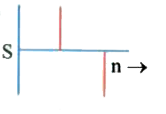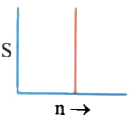Assertion : There will be no Doppler effect,when both the source and listener are at rest and wind alone is blowing
Reason :The blowing wind does not change the distance between the source and listener which is a must for Doppler effect.
Assertion is True Reason is True, Reason is a correct explanation for Assertion
Assertion is true,Reason is true, Reason is a not correct explanation for Assertion
Assertion is True ,Reason is False
Assertion is False but , Reason is True
The correct Answer is:A
Step by step video, text & image solution for Assertion : There will be no Doppler effect,when both the source and listener are at rest and wind alone is blowing Reason :The blowing wind does not change the distance between the source and listener which is a must for Doppler effect. by Physics experts to help you in doubts & scoring excellent marks in Class 12 exams.
Updated on:21/07/2023Topper's Solved these Questions
- WAVE MOTION Book:TARGET PUBLICATIONChapter:WAVE MOTION Exercise:MCQ 7.1
Explore 61 Videos
- SURFACE TENSION Book:TARGET PUBLICATIONChapter:SURFACE TENSION Exercise:EVALUATION TEST
Explore 21 Videos
- WAVE THEORY OF LIGHT Book:TARGET PUBLICATIONChapter:WAVE THEORY OF LIGHT Exercise:EVALUATION TEST
Explore 20 Videos
Similar Questions
Knowledge Check
When both source and listener approach each other with a velocity equal to half the velocity of sound,the change in frequency of the sound as detected by listener is
A3B1C1.5D2The graph between distance between source and observer and apparent frequency in the case of Doppler's effect will be
A B
B C
C D
D
In Doppler effect, when a source moves towards a stationery observer, the apparent increase in frequency is due to
Aincrease in wavelength of sound received by observerBdecrease in wavelength of sound received by observerCincrease in number of waves received by observer in one soundDdecrease in number of waves received by ovserver in one sound
Assertion: No interference pattern is detected when two coherent sources are infinitesimally close to each other.
Reason: The fringe width is inversely proportional to the distance between the two slits.
View SolutionA sound source and listener are both stationary and a strong wind is blowing. Is there a Doppler effect?
View SolutionWould there be a Doppler effect if the source were stationary and the listener in motion? Why or why not? In which direction should the listener move to hear a higher frequency?
View SolutionWhat physical change occurs when a source of sound moves and listener is at rest?
View SolutionUnder what conditions there will be no Doppler effect or no change in frequency despite the motion of source and/or observer.
View Solution

